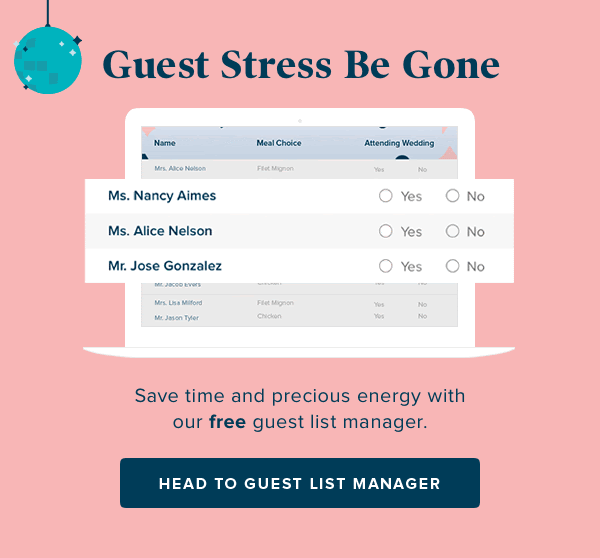Email marketing trends indicate that the rise of artificial intelligence (AI), along with evolving email personalization and segmentation tactics, points to the promise of this long-standing communication channel.
Let’s look at the latest email marketing trends to advance your marketing reach.
What is the Future of Email Marketing?
As technology advances rapidly, one can assume that older tools like email are on the way out. But, that couldn’t be further from the truth.
Email is one of the most common forms of communication worldwide. A study by the Radicati Group projects that the total number of business and consumer emails sent and received per day will grow to over 333 billion by the end of 2022. And, the number of worldwide email users will grow to over 4.2 billion by the end of 2022.
In case you need a little more proof, here are 10 compelling email marketing statistics for 2022, courtesy of Hubspot:
- 31% of B2B marketers say email newsletters are the best way to nurture leads
- 64% of small businesses use email marketing to reach customers
- 81% of B2B companies use email newsletters as part of their content marketing program
- 90% of content marketers say email engagement is the top metric they track to measure content performance
- More than 8 out of 10 people will open a welcome email
- 99% of email users check their inboxes every day; some check their inbox 20 times a day
- 74% of Baby Boomers think email is the most personal channel to receive communications from brands
- Nearly 22% of all email campaigns are opened within the first hour of sending
- Roughly 85% of marketers say they work with mail marketing software
- 66% of marketers believe artificial intelligence is a way to optimize email send times.
9 Email Marketing Trends to Keep On Your Radar
Future-proof your marketing efforts by adopting an intelligent email marketing strategy. Here are six email marketing trends to look out for in 2022:
- Artificial intelligence (AI)
- Highly personalized content
- User-generated content (UGC’s)
- Lead scoring
- Dynamic content
- Mobile-focus
- Data privacy
- Improved user-experiences
- Customer appreciation emails
1. Artificial Intelligence
AI uses customer data and predictive models to make your marketing smarter, faster and more accurate. Eliminate guesswork and let AI help you create just-in-time campaigns that speak to your customers’ needs.
Here are six ways AI can improve your marketing efforts:
- Better segmentation: It’s not easy to get segmentation right. Use AI to collect demographics and purchasing patterns to pinpoint areas of interest, segmenting your customers into niche groups for powerful outreach opportunities.
- Optimized email content: What content and CTAs grab readers’ attention and entice them to convert? Knowing what to say to Group A vs. Group B is a critical element in content creation.
- Automated workflow: AI allows you to set triggers for automated email campaigns based on customer behavior (like an abandoned cart) - even while you sleep.
- Planned message delivery: Send times dictate open rates. Use AI to increase the likelihood that a customer sees your email at the right time and responds when they’re ready to buy.
- Split testing: Split testing (or A/B testing) can be a long, arduous process that’s easy to fudge, returning less than accurate results. Implement AI technology to analyze results quickly, enabling you to make necessary tweaks to improve your email marketing campaigns.
- Analytics: You won’t know where to go next if you don’t understand the results of your current efforts. Interpreting your analytics is vital in measuring the success of your marketing reach.
2. Highly Personalized Content
Content fatigue: we all feel it. With the sheer volume of information we see daily, a one-size-fits-all approach is no longer effective in marketing communications. Therefore, creating highly personalized, engaging content should be high on your list of email marketing goals.
There’s more to email personalization than gathering generic data. You need to know more about your customers to learn what content they’re most interested in receiving. Then, use segmentation to tailor content to your customers’ needs, building relationships and establishing trust.
See how Personalize can help you create targeted content that increases response rates.
3. User-Generated Content
User-generated content (UGC) is unpaid content created by your existing customers. This content could be an unboxing video of your product, a positive review, a before and after photo, or any number of other things your customers come up with.
These first-hand accounts build familiarity with your brand and trust in your product or service — not to mention they can significantly boost your conversion rate. Yotpo’s benchmark study discovered that the average conversion rate of site visitors who saw user-generated content is 166% higher than the conversion rate of those who didn’t.
Start incorporating UGC into your email marketing strategy to establish yourself as an authentic brand with raving fans and happy customers.
4. Lead Scoring
As inbound marketing drives interest in your product or service, you need a method to determine which leads require urgent follow-up. Lead scoring models help sales and marketing teams understand and gauge prospects' interest levels.
Evaluating your leads and analyzing prospect behavior and data is the best way to create a continuous stream of quality leads. You can use a tool like Personalize to score your leads or use it with your lead scoring methodology to boost your marketing qualified leads (MQLs).
5. Dynamic Content
Sadly, “dynamic content” does not indicate the usage of superheroes or explosive language in your emails (but it could).
Dynamic content, also known as adaptive content, refers to the use of content blocks in an email that are specific to a customer’s interest or demographic. Dynamic content blocks are “dropped in” to predetermined areas of an email message, reducing bounce rate and increasing conversions.
6. Mobile-Focus
The increased usage of mobile phones and wearable devices necessitates the move to mobile-focused (and not just mobile-friendly) messaging.
The amount of information a contact can view on a phone or tablet is vastly different than what they can see on a smartwatch. While responsive marketing for smartphones and mobile devices is not new, creating targeted messaging for even smaller devices is a fresh challenge for marketers.
7. Data Privacy
For many marketers, email opt-in requirements seem restrictive.
But double opt-in consent is actually beneficial. Consenting indicates a recipient is genuinely interested in your offering and wants to engage with you — at least initially. It’s up to you to win the contact’s long-term interest and loyalty after that.
The California Consumer Privacy Act took effect in January 2020 and mimics the EU’s GDPR (General Data Protection Regulation) law. Both laws give individuals more control over their data, restrict what organizations can do with that data, and give regulators the power to fine non-compliant organizations.
8. Improved User Experiences
With a saturated online marketplace, shoppers are inundated with options and marketing emails. You need to provide nothing short of a stellar email experience to stand out.
Fortunately, there are numerous tools at your disposal — all you have to do is put them to work. These days, the emails that stand out most incorporate animated GIFs and interactive features.
These additions invite engagement with your email, which, in turn, build curiosity about what other interesting things a visitor might find on your website. In an email from the wedding planning site, Zola, this GIF gives a sneak peek into how their guest management tool works. It’s a clever way to showcase their fun and user-friendly platform.

9. Customer Appreciation Emails
Would you be surprised to learn that birthday emails rack up 481% higher transaction rates than regular promotional emails and 342% higher revenue per email? These stats tie back to an earlier item on our list — personalization.
Customers love receiving unique promo codes and rewards for their birthday, for their loyalty to the brand or for leaving a review on a recent purchase. If you aren’t taking advantage of customer appreciation emails, now is a good time to start.
Personalized Emails Outperform
Are you ready to ramp up your email marketing efforts in 2020 and beyond? Make sure you have the right tools to get started.
Personalize is an AI-powered personalization tool that reveals the products and services your customers are most interested in, giving you 50% better response rates and increased revenue.
Personalize hooks directly into your CRM or email platform, providing the data you need to build automated personalized campaigns – your way!
Set up your email marketing campaigns for long-term success. Check out Personalize and sign up for a no-cost 30-day trial today.



